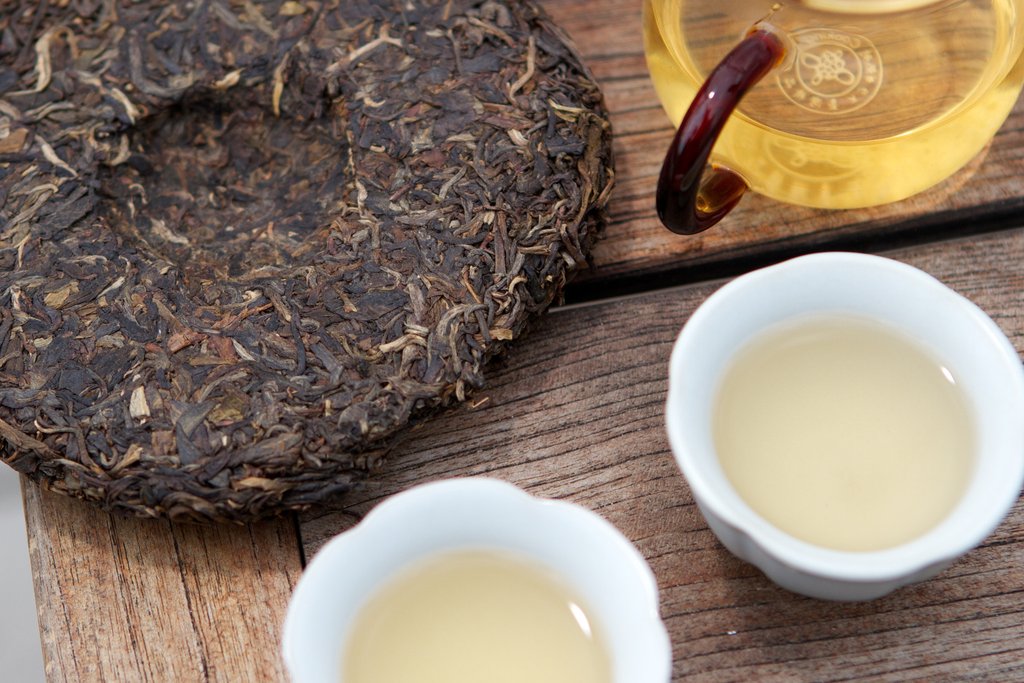Pu’er Me Some More: All About Pu’er Tea of Yunnan
Project Pengyou intern, Jenna Ludwig, shares a bit of knowledge about Yunnan’s delicious and ever-more-popular pu’er tea.

When my classmates and I prepared for a trip through Yunnan province during the Spring Festival, the subject of tea continuously came up and a palpable excitement over the chance to sample the tea in Yunnan was apparent. As a coffee drinker, I willingly admit my ignorance on anything tea-related; I had never heard of pu’er tea until arriving in China. However, I gathered that pu’er was a big deal and that it was necessary that I drink some while in Yunnan. For those of you who, like me, know very little about the world of tea, here is what you should know about the long and fascinating history of pu’er tea and why it is still gaining global popularity today.
History of Pu’er

Pu’er is a variety of fermented tea with roots that can be traced back more than 4500 years. Historically, two ethnic minorities in China, the Dai and the Aini, harvested large leaves from the tea tree, Camellia sinensis, to create pu’er tea. During the Tang dynasty (AD 618-907), the tea trade increased, so the merchants began to compress the tea into bricks in order to make it easier to transport on the difficult journey to Tibet, Siberia, or Thailand, trips that could take months. Exposure to the elements and the long months of travel caused the tea to ferment creating a darker color and flavor than expected. However, it was discovered that the fermentation process actually left a unique flavor that other teas could not compete with, and that pu’er tea actually improves with age. This discovery only increased the popularity of pu’er throughout Asia to the point where even emperors drank pu’er.
In the 1970s, pu’er was introduced to a broader international audience, and the tea processors in Yunnan struggled to keep up with the demand due to the necessity of fermenting the leaves for months before it could be sold. To solve this problem, a second method of processing was created to quicken the fermentation process. Sheng pu’er, the traditional variety, is often aged for 15 to 20 years to achieve the desired flavor whereas the new method, shou, expedites the fermentation process by adding a ‘cooking’ step. Both methods create a uniquely flavored tea that grows stronger and better with age.

The most recognizable feature of pu’er tea is the compressed disc, bing cha, that it is often sold in. Only tea from Yunnan, China can be designated pu’er, so in modern history there have been cases of tea sellers advertising their tea as pu’er and charging outrageous prices when it was not actually pu’er. However, with an influx of Chinese buyers from faraway provinces and even westerners traveling to Yunnan to specifically buy pu’er, the price has skyrocketed to the point that pu’er can sell for more than $700 USD for one kilo, more than the price of silver. In fact, in 2005, 500 grams of a 64-year old batch of pu’er sold for over a million Chinese yuan, nearly $150,000 USD.
As for myself, I sampled multiple varieties of pu’er tea while in Yunnan, and to my untrained palette, they tasted rather similar to other teas I have tasted. However, after participating in a tea sampling in a small shop in Jianshui, Yunnan, I walked away captivated with the whole process and thoroughly impressed with the extraordinary knowledge possessed by tea sellers. I watched as the shop owner methodically prepared tea after tea for us to taste and deliberate over, never hesitating to brew us more once our cups were nearing empty. By the end of the night, all of my friends had purchased discs of the one of the most famous teas in the world that they will now bring back to the United States with them, and will be able to brew pu’er for friends and family who may never have the opportunity to travel to Yunnan, China!
To read about a tea connoisseur’s experience sampling pu’er tea, check out these links:
https://www.npr.org/sections/thesalt/2017/03/14/518792925/why-puer-a-complex-tea-draws-rapt-fans-and-big-dollars
https://www.saveur.com/pu-erh-chinese-tea
Sources: thechineseteashop.com, theteamakers, thespruce.com